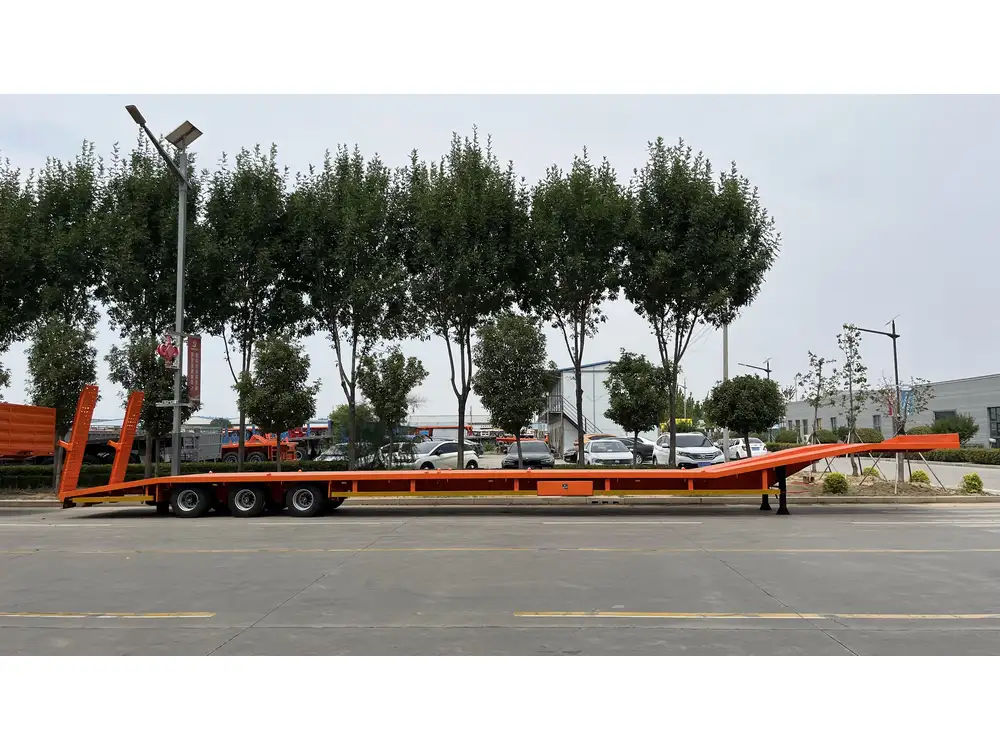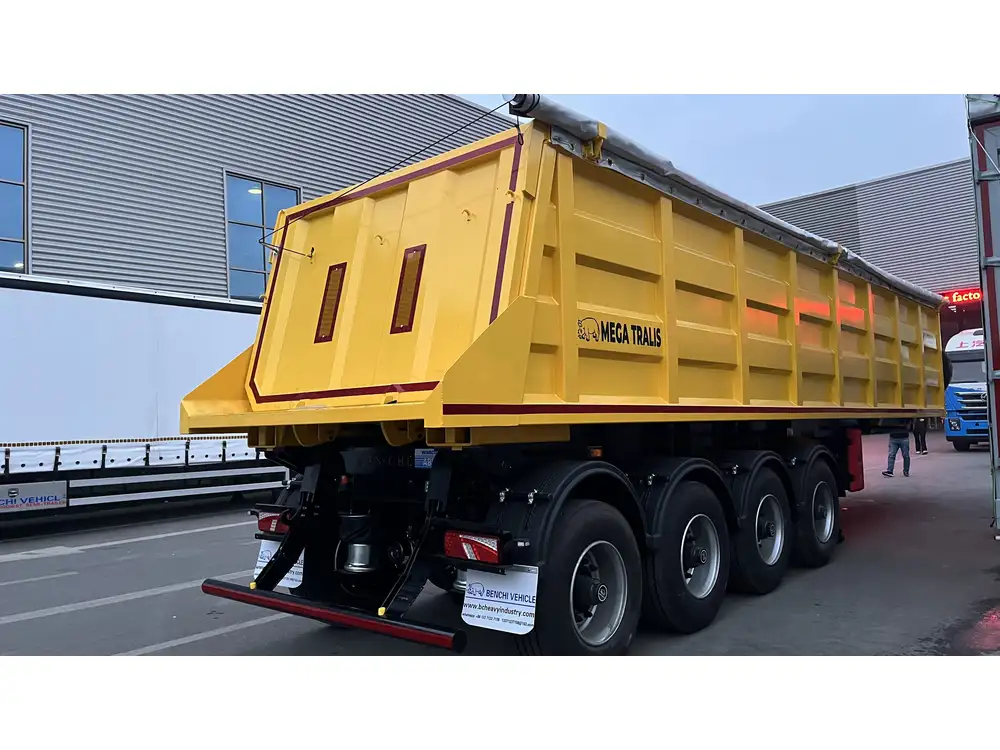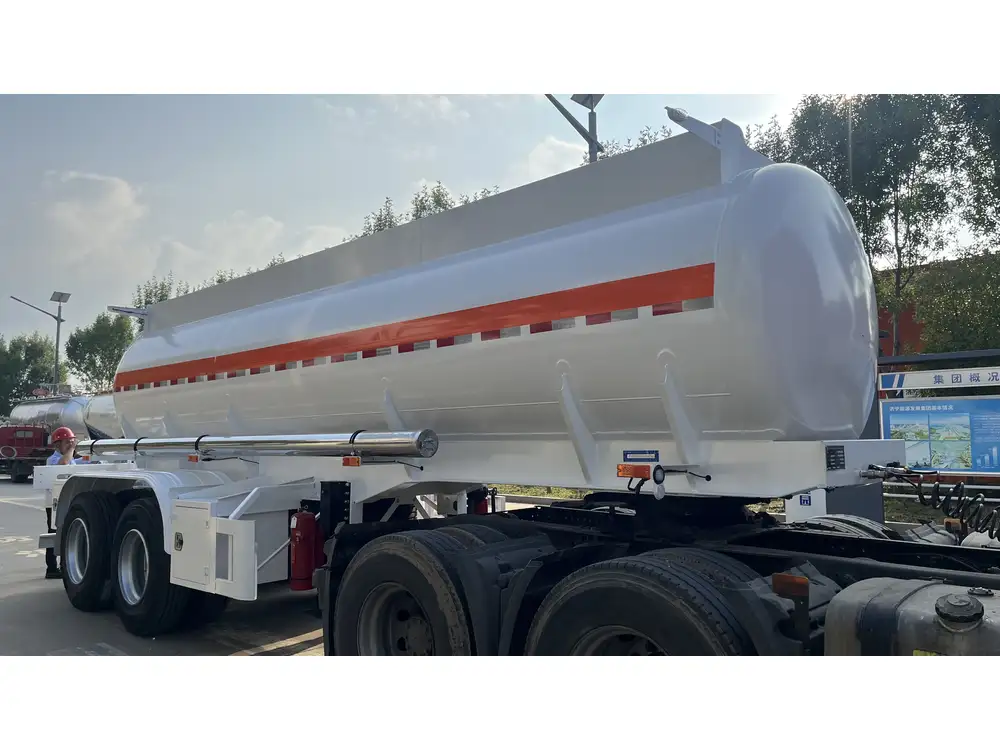Container trailers are the backbone of the shipping and logistics industry, pivotal in transporting goods across vast distances. Their unique design, including robust legs that support the trailer’s weight, plays a significant role in this functionality. Understanding how much weight the legs of a container trailer can handle is essential for ensuring safety and efficiency during transportation. In this article, we will dissect the complexities surrounding the weight capacity of container trailer legs, addressing crucial considerations that every operator, manufacturer, or logistics manager should be aware of.
1. The Basics of Container Trailer Leg Load Capacity
Container trailers, specifically those designed for intermodal shipping, typically utilize several key components that contribute to their load-bearing capacity. At the forefront are the legs, which serve as the primary support mechanism when the trailer is detached from the tractor. These legs, often referred to as landing gear, are engineered to support both static and dynamic loads.
1.1 What Are Container Trailer Legs?
Container trailer legs are hydraulic or mechanical systems that allow the trailer to stabilise when parked. They consist of two main components:
- Outer Leg: Attached to the trailer, providing stability and support.
- Inner Leg: Telescoping within the outer leg, adjusting to various heights and load conditions.

1.2 Key Specifications
Table: Leg Specifications
| Specification | Details |
|---|---|
| Maximum Load Capacity | Varies by design and manufacturer (typically between 30,000 to 60,000 lbs) |
| Adjustment Range | 10 inches to 25 inches |
| Material | High-strength steel |
| Mechanism | Hydraulic or manual |
2. Factors Influencing Load Capacity
While the manufacturer’s specification provides a benchmark, several factors influence the actual load capacity of container trailer legs.

2.1 Material Strength
The strength of the materials used in the legs directly impacts their load-bearing capabilities. Most trailers employ high-strength steel alloys designed to withstand heavy weights and resist deformation under load. For instance, specialized coatings may also enhance corrosion resistance, thereby affecting longevity and reliability.
2.2 Design Specifications
The geometry and design of the landing gear play a significant role. A wider stance usually allows for a greater distribution of weight, thus improving stability. Trailers designed with reinforced legs or bracing systems may support higher loads depending on their engineering.
2.3 Trailer Configuration
Container trailers come in various configurations, including standard 20-foot and 40-foot models. The specific configuration can influence how weight is distributed across the legs. For example, a longer trailer may stress the landing gear differently than a shorter model due to longer lever arms created by the vehicle’s structure.

2.4 Load Distribution
Even if the legs are rated for a certain weight, improper load distribution can lead to leg failure. Weight should be evenly distributed across the entire trailer, and loads should be secured appropriately to mitigate dynamic forces during transport.
3. Common Misconceptions & Safety Considerations
Despite clear specifications, there are several common misconceptions about the weight handling capabilities of container trailer legs.
3.1 Misconception: Manufacturer Ratings Are Absolute
While manufacturers provide crucial guidelines, these ratings are typically based on optimal conditions. Factors such as wearing, environmental conditions, and even improper loading can affect performance.

3.2 Safety Regulations
Adhering to local and international safety regulations is crucial. Standards often dictate maximum allowable weights for trailers and their components. Operators should regularly consult regulations laid out by bodies such as the Federal Motor Carrier Safety Administration (FMCSA) in the United States.
| Regulation Body | Key Regulations |
|---|---|
| Federal Motor Carrier Safety Administration (FMCSA) | Maximum weight limits, inspection requirements |
| International Road Assessment Programme (iRAP) | Safety assessment protocols, load limits |
3.3 Regular Maintenance Crucial
Regular maintenance is vital to ensuring weight-bearing efficiency. Fatigue cracks, hydraulic leaks, and rust can all undermine leg integrity.
- Monthly Inspections: Check for cracks, stress points, and hydraulic fluid levels.
- Lubrication: Keeping moving parts well-lubricated can prevent wear and prolong life.
- Replacement: Regularly assess whether components need to be replaced, particularly before long hauls.
4. The Importance of Load Testing
Understanding the potential load capacity of your container trailer legs requires practical insights derived from load testing.

4.1 What is Load Testing?
Load testing is a method used to verify the load-bearing capacity of trailer legs under controlled conditions. This method helps identify any weaknesses and ensures that the trailer’s design aligns with manufacturer specifications.
4.2 Conducting Load Tests
To effectively conduct load tests, the following methodologies can be adopted:
- Static Load Tests: Gradually applying weight to the trailer while measuring strain, displacement, and eventual failure points.
- Dynamic Load Tests: Assessing performance while in motion or during transport to simulate real-world conditions.
4.3 Documenting Results
Results from load tests should be meticulously documented to inform future operational decisions. Clear records can also serve as invaluable evidence in the case of safety audits.

5. Conclusion: Ensuring Safety and Efficiency in Operations
The capacity of container trailer legs is an intricate subject impacted by various factors. By understanding the mechanics behind leg strength, testing methodologies, and best practices for load management, operators can optimise their trailer performance while ensuring compliance with safety regulations.
Monitoring and Managing Loads
Incorporating technology such as load monitoring sensors can dramatically enhance operations. These systems can alert drivers to overloading hazards, ensuring that safety is always the priority.
Encouraging Safe Practices
To sum up, ensuring that your container trailer legs handle the intended weights effectively requires a strategic approach that combines education, regular inspections, load testing, and adherence to manufacturer specifications. By adopting these proactive measures, you can enhance safety and operational efficiency while safeguarding your cargo and fleet.
Making informed decisions leads to optimal outcomes in logistics and freight handling. As operations continue to evolve, staying abreast of developments in container trailer technology and regulations will position your business for success in a competitive landscape.



